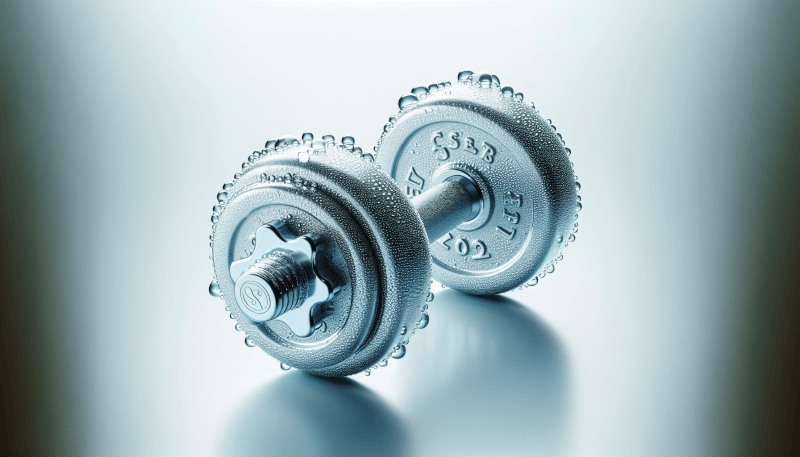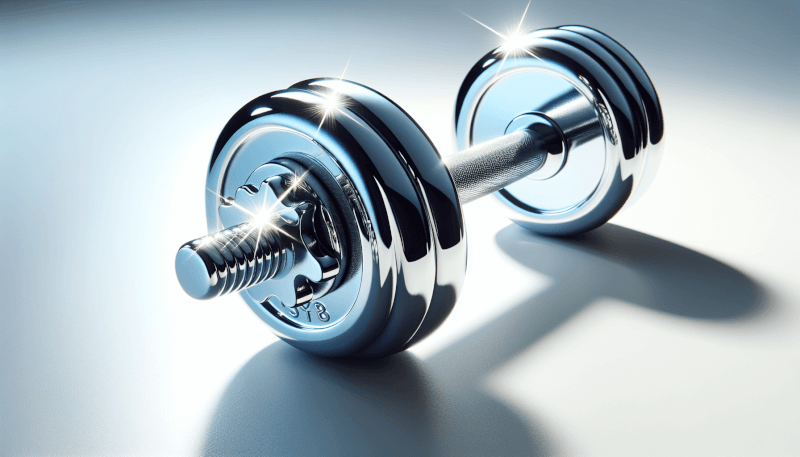Keeping your home gym equipment clean is essential for maintaining its longevity and ensuring a safe and healthy workout environment. But don’t worry, cleaning your gear doesn’t have to be a time-consuming chore. With these easy DIY tips, you’ll learn how to breeze through the process and have your equipment looking as good as new in no time. From wiping down your treadmill to disinfecting your dumbbells, we’ve got you covered with simple and effective cleaning techniques that anyone can master. Say goodbye to dirt and germs, and hello to a pristine workout space that will keep you motivated for your next sweat session.

Equipment Cleaning Basics
Why Cleaning Your Home Gym Equipment is Important
Keeping your home gym equipment clean is essential not only for maintaining their longevity but also for your health and safety. Regular cleaning not only removes dirt, sweat, and bacteria but also prevents the buildup of germs and viruses that can cause infections. By incorporating a simple cleaning routine into your gym maintenance, you can ensure that your equipment remains in optimal condition and provides a safe and hygienic workout environment for you and your family.
Materials Needed for Cleaning
Before diving into the specific cleaning methods, it’s important to gather the necessary materials. For general cleaning, all you need is a soft cloth or sponge, mild detergent, and water. You can also use disinfectant wipes or sprays to sanitize the surfaces. Additionally, it’s a good idea to have a vacuum cleaner or handheld vacuum to remove any debris or dust that may accumulate around your gym area.
Frequency of Cleaning
How often should you clean your home gym equipment? Ideally, you should aim to clean your equipment after every use or at least once a week. However, certain factors, such as the number of users and the intensity of workouts, may require more frequent cleaning. Pay attention to any visible stains, odors, or dirt buildup, as these are clear indicators that your equipment needs a thorough cleaning. By maintaining a consistent cleaning routine, you’ll ensure that your home gym remains fresh and hygienic.
Cleaning Cardio Machines
Treadmill
Cleaning your treadmill is crucial for its longevity and your safety. Start by unplugging the machine and using a dry cloth or vacuum cleaner to remove any dust or debris from the belt, console, and surrounding areas. For deeper cleaning, dampen a cloth with a mild detergent and water solution, making sure to wring out any excess liquid. Gently wipe down the surfaces, focusing on areas prone to sweat buildup, such as the handlebars and console. Finish off by wiping the machine with a dry cloth to remove any moisture.
Stationary Bike
To clean your stationary bike, begin by unplugging it from the power source. Using a dry cloth, wipe down the entire bike to remove any dust or dirt. For the seat and handlebars, consider using a mild detergent solution to eliminate sweat stains and germs. Be sure to use a clean cloth and wring it out to avoid excessive moisture. Pay special attention to pedals, as they can accumulate dirt and grime from shoes. Finish by drying the bike with a dry cloth to prevent any moisture from lingering.
Elliptical Trainer
Cleaning your elliptical trainer is similar to cleaning a treadmill. Start by unplugging the machine and removing any loose debris using a vacuum cleaner or dry cloth. For the handles and pedals, use a mild detergent solution to remove sweat residue and germs. Ensure that the cloth is only damp, not soaking wet, to prevent damage to the machine. Wipe down all surfaces and finish by drying with a cloth to remove any remaining moisture.
Rowing Machine
To clean your rowing machine, begin by unplugging it from the power source. Use a dry cloth or vacuum cleaner to remove any dust or debris from the seat, handlebar, and rail. For a deeper clean, dampen a cloth with a mild detergent and water solution, ensuring it’s not overly saturated. Wipe down the surfaces, paying attention to areas that come in contact with sweat. Finish off by drying the rowing machine with a cloth to remove any residual moisture.
Cleaning Weightlifting Equipment
Dumbbells
Dumbbells are relatively easy to clean, and a regular wipe-down will keep them in good condition. Start by using a cloth or disinfectant wipe to remove any dirt or sweat from the handles and weights. Pay attention to any visible stains or sticky residue and make sure to clean them thoroughly. For a deeper clean, you can also use a mild detergent solution with a damp cloth. Remember to dry the dumbbells completely to prevent rust or moisture damage.
Barbells
Cleaning barbells will require a bit more effort, but it’s essential for maintaining their performance and durability. Begin by removing the weight plates from the barbell, if applicable. Use a cloth or disinfectant wipe to remove any dirt or sweat from the bar and sleeves. For the weight plates, a mild detergent solution and a scrub brush can help remove any stubborn stains or debris. Once everything is clean, dry the barbell thoroughly before reassembling the weights.
Weight Plates
Weight plates can become dirty and stained over time, especially if they come in direct contact with sweaty hands or the floor. To clean weight plates, start by removing them from the barbell or weight machine. Use a damp cloth or sponge with a mild detergent solution to wipe down the surfaces, paying attention to any stains or buildup. Avoid using abrasive materials that could scratch the plates. Rinse them thoroughly with clean water and dry them before returning them to their storage location.
Weight Benches
Cleaning your weight bench is a crucial step in maintaining a hygienic workout environment. Begin by removing any loose debris using a dry cloth or vacuum cleaner. For fabric or vinyl upholstery, use a mild detergent solution and a soft cloth to wipe down the surfaces. Pay special attention to areas that may come in direct contact with the body, such as the backrest and seat. Rinse the cloth thoroughly to remove any soap residue before wiping down the bench again. Finally, let the weight bench air dry completely before using it again.
Cleaning Yoga and Pilates Equipment
Yoga Mats
Yoga mats are prone to absorbing sweat and dirt, making regular cleaning essential. Begin by rolling out the mat and using a soft brush to remove any loose debris. For a general cleaning, wipe the mat down with a cloth or sponge soaked in a mild detergent solution. Make sure to clean both sides and pay attention to any stains or stickiness. Rinse the mat with clean water and let it air dry completely before rolling it up for storage.
Pilates Reformers
Cleaning a Pilates reformer may require some disassembly, so consult the manufacturer’s instructions for guidance. Begin by removing any loose debris or dirt from the frame and springs using a vacuum cleaner or dry cloth. For the upholstery, mix a mild detergent with water and use a soft cloth to wipe down the surfaces. Pay close attention to any sweat stains or residue on the footbar or headrest. Rinse the cloth and repeat the process to ensure all soap residue is removed. Let the reformer air dry before reassembling and using it again.
Yoga Blocks
Yoga blocks are typically made of foam or cork and can absorb sweat and dirt. To clean yoga blocks, start by wiping them down with a damp cloth to remove any visible dirt or residue. If the blocks are particularly dirty, you can use a mild detergent solution to remove stains or stickiness. Rinse the blocks thoroughly with clean water and let them air dry completely before storing them.
Exercise Balls
Exercise balls are fantastic for core workouts but can easily accumulate dirt and sweat. Begin by inflating the ball to its recommended size and using a dry cloth to remove any loose dirt or debris. For a deeper clean, mix a mild detergent with water and use a cloth or sponge to wipe down the ball’s surface. Pay attention to areas that come in direct contact with your skin. Rinse the cloth and repeat the process to remove any soap residue. Finally, let the exercise ball air dry completely before using or storing it.

Cleaning Resistance Bands and Bands
Resistance Bands
Resistance bands are versatile and often used in a variety of exercises. To clean them, start by wiping them down with a clean, damp cloth to remove any visible dirt or sweat. For a more thorough cleaning, prepare a mild detergent solution and soak the bands for a few minutes. Afterward, rinse the bands with clean water and let them air dry completely before using or storing them. Avoid using excessive heat or leaving them in direct sunlight, as this can degrade the elasticity of the bands.
Exercise Bands
Exercise bands, like resistance bands, require regular cleaning to maintain their quality and prevent any buildup of sweat and dirt. Begin by wiping down the bands with a clean, damp cloth to remove any visible debris. For deeper cleaning, prepare a mild detergent solution and soak the bands for a few minutes. Rinse them thoroughly with water and let them air dry completely before using or storing them. Remember to avoid exposing exercise bands to excessive heat or sunlight, as this can damage the material.
Cleaning Home Gym Accessories
Jump Rope
Jump ropes are excellent cardio tools but can accumulate sweat and dirt over time. Start by wiping down the handles with a clean, damp cloth to remove any debris or residue. If the rope itself is dirty, you can use a mild detergent solution and a cloth or sponge to clean the rope’s surface. Be careful not to soak the rope excessively, as this can cause damage. Rinse the rope with clean water and let it air dry completely before using or storing it.
Exercise Bands
Exercise bands are versatile accessories that require regular cleaning to maintain their quality and prevent bacteria buildup. Begin by wiping down the bands with a clean, damp cloth to remove any visible dirt or sweat. If the bands are particularly dirty, use a mild detergent solution and a cloth or sponge to wipe down the surfaces. Rinse them thoroughly with clean water and let them air dry completely before using or storing them.
Gloves
Gloves are an essential accessory for weightlifting and can become dirty and sweaty over time. To clean weightlifting gloves, begin by rinsing them with clean water. Gently lather them with mild soap and rinse thoroughly to remove any sweat or odor. Avoid submerging them completely to prevent damage. Squeeze out any excess water and let them air dry completely before using them again. Do not use any heat sources, such as a hairdryer or direct sunlight, as this can cause the gloves to shrink or become distorted.
Resistance Bands
Resistance bands are crucial for strength training but can accumulate sweat and dirt. To clean resistance bands, start by wiping them down with a clean, damp cloth to remove any visible debris. If they are particularly dirty, soak them in a mild detergent solution for a few minutes. Rinse the bands thoroughly with clean water and let them air dry completely before using or storing them. Avoid exposing them to excessive heat or sunlight, as this can damage the material and affect their elasticity.

Proper Technique for Equipment Cleaning
General Cleaning Steps for All Equipment
No matter the type of equipment, following these general cleaning steps will help ensure a thorough clean:
- Begin by unplugging electronic machines from the power source and removing any loose debris.
- Dust or vacuum all surfaces, paying attention to areas that accumulate dust or sweat.
- Use a mild detergent solution or disinfectant wipe to wipe down surfaces, removing any stains or bacteria.
- Rinse with clean water or wipe with a damp cloth to remove any soap or residue.
- Dry all surfaces thoroughly to prevent moisture buildup or damage.
Using Natural Cleaning Solutions
If you prefer to avoid harsh chemicals, there are natural cleaning solutions that can effectively clean your equipment. For general cleaning, you can mix equal parts water and vinegar to create a mild cleaning solution. This solution is ideal for wiping down surfaces and removing sweat stains. Additionally, a mixture of baking soda and water can be used as a mild abrasive for tough stains. It’s always important to test these solutions on a small, inconspicuous area before applying them to the entire surface to ensure compatibility.
Proper Disinfection Methods
While regular cleaning is essential, disinfection is equally crucial for maintaining a hygienic gym environment. After cleaning your equipment, you can use disinfectant wipes or sprays to kill bacteria and viruses. Make sure to follow the instructions on the product and allow sufficient contact time for effective disinfection. Pay special attention to high-touch areas such as handles, consoles, and upholstery. By incorporating proper disinfection methods into your cleaning routine, you can further reduce the risk of spreading germs.
Maintaining Hygiene in Your Gym Space
Regularly Cleaning the Surrounding Area
In addition to cleaning your equipment, it’s vital to regularly clean the surrounding area of your home gym. Vacuum or sweep the floor to remove any dirt or debris, paying close attention to corners and under equipment. Wipe down any surfaces, such as countertops or shelves, that may accumulate dust or sweat. Don’t forget to clean mirrors or windows to maintain a clear and inviting environment. By keeping the entire gym space clean, you’ll create a more enjoyable and hygienic workout experience.
Washing Hands Before and After Use
One of the simplest yet most effective ways to maintain hygiene in your home gym is to wash your hands before and after each workout. Use warm water and soap, lathering for at least 20 seconds. Pay attention to areas between your fingers, around your nails, and the back of your hands. Rinse thoroughly and dry with a clean towel or hand dryer. By practicing good hand hygiene, you’ll reduce the transfer of germs, keeping yourself and others safe during workouts.
Using Towels and Sweat Guards
To prevent sweat from accumulating on your equipment, consider using towels and sweat guards. Place a towel on the seat or mat to absorb sweat during your workout. This not only keeps your equipment clean but also prevents the growth of bacteria. Sweat guards, such as protective covers or pads, can be used on cardio machines to reduce sweat contact. Always remember to wash your towels and sweat guards regularly to maintain their effectiveness and hygiene.

Safety Precautions for Equipment Cleaning
Unplugging Electronic Machines
Before cleaning any electronic machines, it’s crucial to unplug them from the power source. This not only ensures your safety but also prevents any accidental damage to the equipment. When dealing with electrical components, such as consoles or motorized parts, avoid using excess liquid or spraying directly onto the surfaces. Instead, use a damp cloth or disinfectant wipe to clean these areas and prevent any moisture from damaging the electronics.
Avoiding Excess Moisture
While cleaning your equipment, it’s important to avoid excessive moisture. Too much moisture can seep into electronic components, upholstery, or delicate parts, potentially causing damage or reducing the lifespan of your equipment. Always wring out any excess liquid from your cleaning cloth or sponge to prevent dripping. Additionally, make sure to thoroughly dry all surfaces before using the equipment again to prevent the growth of mold or mildew.
Checking for Damages or Malfunctions
Regular cleaning provides a great opportunity to inspect your equipment for any damages or malfunctions. Examine all parts, including cords, cables, handles, and upholstery, for signs of wear and tear. Look for loose screws or bolts that may need tightening. If you notice any damage or malfunction, address it promptly to prevent further issues or potential safety hazards. By staying proactive and addressing these issues early on, you can ensure the longevity and safety of your equipment.
Conclusion
Regularly cleaning your home gym equipment is vital for maintaining its longevity and ensuring a clean and hygienic workout environment. By following the cleaning methods outlined in this article, you can effectively remove dirt, sweat, and bacteria from your cardio machines, weightlifting equipment, yoga and Pilates gear, resistance bands, and accessories. Remember to incorporate proper disinfection methods and maintain a clean surrounding area to further enhance the hygiene of your gym space. By taking these simple cleaning and maintenance steps, you’ll enjoy a clean and safe home gym for years to come.



